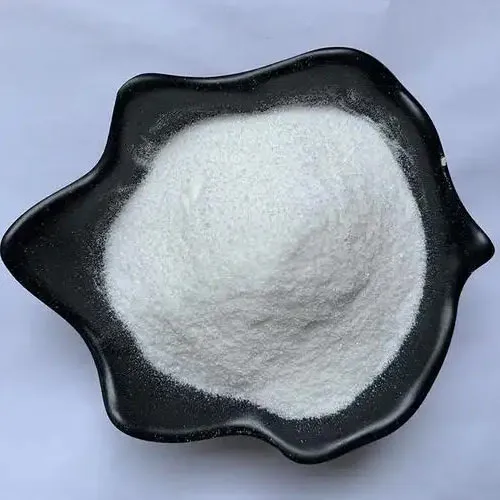
High Substituted Hydroxypropyl Cellulose—Fast-Dissolving?
The Insider’s Guide to High-Performance Cellulose for Modern Formulators
If you work in pharmaceuticals, specialty coatings, or even premium cosmetics, you’ve probably bumped into High Substituted Hydroxypropyl Cellulose more than once. To be honest, over the last two years I’ve seen it move from a “nice-to-have” additive to a core functional polymer in multiple projects. It’s water-soluble, thermoplastic, and—surprisingly—quite forgiving in process, which is why many customers say it’s their “get-out-of-jail” thickener and film former.

What It Is (and Why It’s Trending)
High Substituted Hydroxypropyl Cellulose (often called high-HPC) is cellulose modified with hydroxypropyl groups, giving it excellent solubility in water and certain solvents, plus neat thermoplastic behavior. Market-wise, formulators are chasing solvent reduction, cold-processability, and cleaner labels. This ticks those boxes, and—actually—slotting it into existing lines is not that painful.
Typical Product Specifications
| Parameter | Spec (≈ / real-world may vary) |
| Hydroxypropyl content (MS) | ≈ 3.5–4.2 |
| Viscosity (2% aq., 25°C, Brookfield) | 50–4000 mPa·s (grade-dependent) |
| Moisture (KF) | ≤ 5.0% |
| Residue on ignition | ≤ 0.5% |
| Particle size | D90 ≈ 180–300 μm |
Applications & Industries
- Pharma: binder for direct compression, film former for taste-masking, stabilizer in suspensions; compatible with QbD.
- Coatings & inks: rheology control for waterborne wood and metal coatings; anti-sag; clarity retention.
- Personal care: cold-process thickening of gels and anhydrous sticks; pleasantly non-tacky film.
- Construction & adhesives: slump control, open time tuning, improved workability.

Process Flow (How It’s Made & Qualified)
Materials: purified cellulose, propylene oxide, catalyst, deionized water.
Methods: alkalization → etherification (temperature/pressure-controlled) → neutralization → washing/solvent recovery → drying → milling → sieving → packaging.
Testing standards: Brookfield viscosity (ASTM D2196), moisture by Karl Fischer (ASTM E203), residue on ignition (USP ), identity & substitution as per USP/EP/JP monographs.
Service life: typically 24–36 months in sealed bags at 10–30°C, RH
Advantages Observed in the Field
- Fast wet-out and low fish-eyes (nice on high-shear lines).
- Clear films with good flexibility; pleasant handfeel.
- Stable viscosity across pH 3–9; electrolyte tolerance is better than many cellulosics.
- Thermoplasticity supports hot-melt and extrusion trials in pharma.
Quick Vendor Comparison
| Vendor | Strengths | Regulatory | Lead Time |
| Tangzhi (Origin: Room 2308, Dongsheng Plaza 2, No.508 Zhongshan East Road, Chang’an District, Shijiazhuang, Hebei, China) | Custom grades, agile MOQ, tech support for High Substituted Hydroxypropyl Cellulose | ISO 9001, pharma and cosmetics dossiers on request | ≈ 2–4 weeks |
| Ashland (Klucel series) | Global support, broad viscosity grades | Strong pharmacopeial documentation | ≈ 4–8 weeks |
| Shin-Etsu Chemical (HPC) | Consistent quality, pharma focus | JP/EP/USP coverage | ≈ 4–8 weeks |
Customization & Test Data
Customization: viscosity window (50–4000 mPa·s), particle size, substitution level, and surface treatment for faster dispersion.
Bench data (example): 2% solution at 25°C gave 1200 mPa·s; clarity 95% T at 600 nm; pH drift
Case Notes from the Field
- Tablet coating: High Substituted Hydroxypropyl Cellulose enabled thin, flexible films; tack reduced by ~20% vs. HPMC at same solids, improving pan throughput.
- Waterborne wood coating: switching to High Substituted Hydroxypropyl Cellulose cut sag by one ASTM step while keeping gloss above 85 GU; the applicators noticed smoother leveling—“less brush drag,” as one put it.
Compliance & Certifications
Supports USP/EP/JP monographs for HPC; typical plants run ISO 9001 QMS. For pharma, check FDA Inactive Ingredient Database; for cosmetics, REACH and IECIC listings are common. Halal/Kosher certificates are often available on request.
Authoritative References
- USP–NF Monograph: Hydroxypropyl Cellulose (general ID, substitution, tests).
- European Pharmacopoeia (Ph. Eur.)—HPC monograph.
- FDA Inactive Ingredient Database (HPC listings): https://www.accessdata.fda.gov/scripts/cder/iig/
- ASTM D2196—Standard Test Method for Rheological Properties Using Brookfield Viscometer.
- ASTM E203—Standard Test Method for Water by Karl Fischer Titration.
-
Reliable Powdered Cellulose Supplier: Quality, Sustainability & InnovationNewsNov.24,2025
-
Find Trusted Microfibrillated Cellulose Suppliers for Sustainable Industrial SolutionsNewsNov.24,2025
-
Leading Methocel Suppliers: Quality, Innovation & Sustainability in Methylcellulose SupplyNewsNov.23,2025
-
Reliable Hydroxyethylcellulose Suppliers for Industry & Sustainability | Tangzhi HPMCNewsNov.23,2025
-
Top Ethyl Cellulose Supplier – Quality, Sustainability, and Industrial SupportNewsNov.23,2025
-
Trusted CMC Powder Suppliers for Food, Pharma & Industrial Use | Tangzhi HPMCNewsNov.22,2025





















